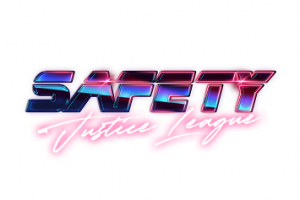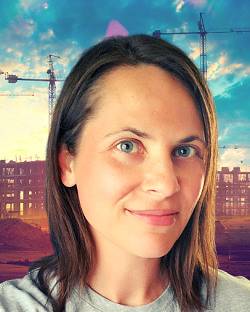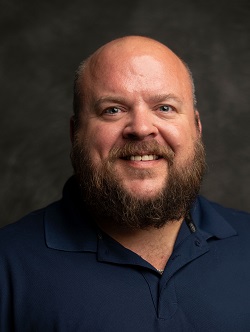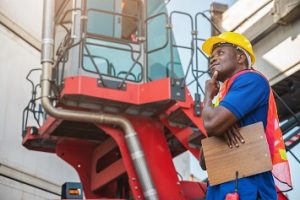We’re kicking off the EHS Daily Advisor’s Safety Culture Week (October 19-23, 2020) with a brand new episode of EHS on Tap that promises to both inform and entertain. We’re very excited to be joined by the Safety Justice League, a group of self-proclaimed safety nerds—Abby Ferri, Jason Lucas, and Jason Maldonado—who are constantly on the lookout for safety superheroes. This intrepid league of professionals are speakers, authors, and fellow podcasters with a combined half-century of experience in the safety field. In addition to today’s podcast they will also be joining us for a panel discussion at our next EHS Now event on November 11, 2020. Register here today!
 If you would prefer to listen to this episode of the podcast, you can find the audio here.
If you would prefer to listen to this episode of the podcast, you can find the audio here.
Justin Scace: Hello, everyone. And welcome to EHS on Tap. I’m your host, Justin Scace, senior editor of the EHS Daily Advisor, and we hope that all of our listeners are doing all they can to remain healthy and safe during the ongoing COVID-19 pandemic.
Now, today, EHS on Tap is kicking off the EHS Daily Advisor Safety Culture Week with a brand new episode that promises to both inform and entertain. I’m very excited to be joined by the Safety Justice League, a group of safety nerds who are constantly on the lookout for safety superheroes. This intrepid league of professionals are speakers, authors, and fellow podcasters, with a combined experience of over a half century in the safety field. And in addition to today’s podcast, they will also be joining us for a panel discussion at our next EHS Now event on November 11th.
So without further ado, I am pleased to introduce the Safety Justice League: Abby Ferri, Jason Lucas, and Jason Maldonado. Thank you all so much for joining us today on the EHS on Tap podcast.
Abby Ferri: Thank you.
Jason Lucas: Oh, thank you so much for having us.
Jason Maldonado: Happy to be here.
Justin Scace: Absolutely, it’s great to have you. So, let’s start things off by going around the room, as it were, and introducing ourselves. Tell our audience a little bit about who you are and what your backgrounds in safety are like.
Abby Ferri: I’ll go first. I beat the two Jasons to it. Hey, I’m Abby Ferri, and I go by Safety Abby. It’s not really a superhero thing, but just a social media thing to make it easy. But I come through the safety field from the academic route. So, I started in college, went through a master’s of environment health and safety program, and got into construction right away. And I’ve been in construction ever since with some detours and whatnot into insurance as well and consulting for myself. And that’s how I got here with the intrepid Safety Justice League.
Jason Lucas: And I’m going to go the opposite route, because my route to safety actually came up through operations. I started in industrial services and operations, and then found my way into safety as quickly as I could. I have Social Media Safety Minute, is my social media thing. I try to make complex safety issues as simplified as possible, and hopefully share them and share the how to do them better in a minute or less. So that’s me. I’ve been around for a little while.
Jason Maldonado: Yeah, he makes up most of that half century.
Jason Lucas: This is true, this is true.
Jason Maldonado: And my journey into safety was a little bit different than the other two as well. I started out in the United States Air Force in munition systems, and I actually had no intention to do anything with safety, but I got selected do a really cool project that was centered around reliability and trying to figure out and predict where missile assets would go bad before they actually did. That really set me off into this new frame of thinking and really looking for how to prevent things before bad things happen.
So, that’s really how I got my start into safety. I got out of the military and I’ve worked in chemical operations, construction, food manufacturing, power industry, utilities, a bunch of experience there, and now on with this group and doing great things in communication and media and marketing. My online presence is known as Relentless Safety, where I do a lot of writing and blogging. That’s how I got connected with these two.
Jason Lucas: That is true.
Justin Scace: That’s awesome. Some really diverse backgrounds there, but all coming together for the betterment of safety. So, you are all collectively known as the Safety Justice League. Could you tell me a little bit about what the Safety Justice League is, what its goals are, and how you’re going about helping EHS professionals create safer workplaces?
Abby Ferri: You know, when I think of the beginning of Safety Justice League, I think it started in frustration, and just mutually feeling that frustration and being a sounding board.
Jason Maldonado: Yeah, I think we felt collectively, you know, being at a mid-point in our career, and this was something… The interesting part about Safety Justice League is that it’s not a name that we picked. It’s something that grew into its own. We actually just started collaborating together, making these little videos that we call the Ask a Safety Pro. And the idea was there’s all these struggles that we went through coming up through our formative years, and we didn’t have very many people to reach out to or bounce ideas off of, have that sounding board, like Abby said. So, we started creating these videos, and then they in turn created conversations. The interest in that dynamic and that sharing was really what we saw as something missing from the safety field, so that’s what we wanted to take and build on and really provide a voice for some of these ideas and even some of these people in the safety arena that maybe just don’t think that they have something worth saying, but they do really have some great ideas and great thoughts.
Jason Lucas: You know, I’m really glad that you brought up the voice for the voiceless idea, Jason, because that was our intention from the very beginning. Because we’ve all felt like lone wolfs sometimes out there in the safety field, and we didn’t want people to feel alone anymore. We wanted to give them not only a voice, but also an ear to listen to the things that they were struggling with, and hopefully being able to provide, as a collective, to be able to provide some good advice. And you know what? Sometimes it’s not the advice that they need, it’s just somebody to go, “Man, I know. I hear you, that sucks,” and just listen to what they’re struggling with. And we’ve been really trying to look to provide that.
Abby Ferri: It’s weird to think of podcasters as being listeners, but I feel like we do listen to our listeners, if that doesn’t sound awkward enough. But I envision that the listeners of the podcast are driving to their work site and they’re listening, and they might be talking along with us, or like what Jason just said, just like, “Ah, that’s so true,” and that’s what we’re really aiming for, is just having more camaraderie, even though we have to do it virtually now.
Justin Scace: Absolutely. That’s great. It’s such a creative and engaging way to reach out to that audience of safety professionals who might be looking for their voice. Now, we’ve assembled you all here for a podcast episode, kicking off the EHS Daily Advisers Safety Culture Week, so let’s talk about safety culture a little bit. How does safety culture fit into each of your safety philosophies, and what are the challenges and opportunities that are facing safety culture at organizations today?
Abby Ferri: I’ll start. Yeah, for me, I feel like safety culture is a by-product, that I know a lot of people, they set out to form a safety culture or grow or establish a safety culture. But I feel that it’s something that just… It happens, and you don’t choose your culture, your culture chooses you in the safety culture sense, that what you’re putting into it based on activities, in which you’re asking people to do as far as activities and participation, that the end product is your safety culture. And I know some safety professionals aren’t that happy with the culture that they have at their organization, which is why this is a topic. But I think it’s something that it’s activity-based.
Jason Maldonado: Yeah, I think for me, it’s about figuring out work, because we have been traditionally… And partly it’s on us, it’s our fault, but we’ve been traditionally siloed in industry. Safety is the form you fill out at the beginning of the job. It’s the permit that you have to do before you can go in a confined space. It’s the thing you’ve got to check off the list before you do the real work. And I know that’s a really, really narrow version and way to look at safety, but if you think of it in the eyes of the worker who’s out there turning the wrenches and doing these tasks, a lot of times that’s what they hear. And that’s why you get the eye rolls when you have, “Oh, we’ve got to have a safety meeting right now.”
And what we’ve really tried to do, or what I think drives safety culture is figuring out how to make safety fit into your business rather than it be anything extra or bureaucratic or burdensome. And granted, there’s going to be those things because compliance is required. But I think we’ve gone, in some cases, so far to the compliance approach or so far out in the compliance approach, that we’ve forgotten that people are the ones that are actually doing the work that needs to be compliant, that needs to be safe. And in order to have a good culture, they have to believe that safety is just another piece, another part, another component of the work that they’re doing.
Jason Lucas: Yeah, and I’m going to actually take what both of them said and wrap it up in an easier package, like a Social Media Safety Minute, but hey, whatever. The thing about-
Jason Maldonado: What he just said is that we ramble, and he’s nice and gets into the point.
Jason Lucas: That was my nice way of saying that, but, hey, it’s okay. No, really, truly, culture comes down to do you care about your people or not? Because if you’re showing that you care about your people and you have a people first mentality, then culture is going to fall into place. Like Jason was saying, there’s things that we have to do regulation-wise, things like that, but really it boils down to fitting within those parameters. Are we doing whatever it takes to care for our people and to make sure that they’re as safe as they possibly can? Because that has to be priority in everything we choose to do.
Abby Ferri: I was waiting for you to say people over everything.
Jason Lucas: Well, that was coming, but I was like, you know, hang on, I’ll save that one for later.
Jason Maldonado: Don’t steal his thunder.
Abby Ferri: Sorry.
Jason Lucas: You know what I heard? I heard Maldonado means people over everything, in Israeli.
Abby Ferri: There you go.
Jason Maldonado: Did we get a new one?
Jason Lucas: Yeah, we got a new one.
Jason Maldonado: Okay.
Justin Scace: All right. Well, thank you for all that insight into safety culture and how much it really means to organizations. Now, what do you all think are going to be the biggest challenges facing safety in general in the next year or the next five years or even the next decade, and how are organizations going to need to adapt in order to protect their workforces?
Jason Maldonado: So, two things. In my mind, there’s two sides of this, and one of them’s the immediate approach that we’re going to have to take as the safety profession. I think… And I may get a little bit of flack for this. I think that we need to, or we have to rise out of the ashes a little bit after seeing the value that some organizations have placed on safety in the light of COVID-19. We’ve all seen it, heard it, been around it, where the safety function was the first one to get cut, especially during this time, or even those that were essential workers during the quarantine really got sidelined in the interest of HR or production being at bare minimum, but still having to produce and those types of things.
So, I think it shed some needed light on where we need to improve as a profession. And as a business, again, I’m going to go back to it because I don’t think it can be said enough. In business, we have to be able to integrate. We have to be able to make safety part of the work that we’re doing rather than something extra and added.
Abby Ferri: I want to go even more cynical on this path. I’ve been really concerned that safety professionals haven’t been the people that our workforce are turning to, or even that media is turning to right now, when we’re talking about literally workplace safety and health. And so a challenge I see is just continuing on the same path of safety always having to establish their legitimacy or their worth and value in their organization and within their industry, and amongst other similar professions as well. So, I feel it’s even a more cynical or existential kind of problem that we have. And the pandemic has just made me personally look at it in a completely different way on why aren’t people asking us questions that I see other people answering in the media?
Jason Lucas: Yeah, and not just the question and answering, Abby, but I’ll take it even further. I think one of the biggest challenges that we’re going to face in the next year, the next five years, or even the next decade, is if safety doesn’t start getting a seat at the table in decision-making from an operational standpoint, then we’re going to continue to see the same path that we’ve seen for the past decade, for the past year, for the past five years.
So, there has to be decision-makers who are in safety at the seat at the table, because then maybe people will start asking safety people the questions that they’re asking others right now.
Justin Scace: That’s a great point. If I could just toss out an extra question there, how does safety get that seat at the table? What do you guys think that they need to do in order to get in that position?
Jason Maldonado: We need to stop being safety. No, we need to figure out how… We need to integrate into business. We have been so traditionally siloed. How many safety OSHA regulation waivers do you know that run around telling everybody on site what’s compliant and not, and what’s not compliant. It’s such a skewed focus that we’ve placed on ourselves, when we really need to be looking at how do we facilitate safe work? Rather than roadblock and obstruct, how do we really make people understand that we can do it better, we can do it faster, we can do it more cost-effective.
So again, we need to stop being safety. We need to start being business-oriented and have a business mindset, and really understand what it is that makes our companies tick, because if we’re not making money, we don’t have jobs. So, the idea that it’s safety above everything is something that we really need to reevaluate. And that’s not to say that we’d ever put lives at risk, but we need to figure out where the balance is and how we can facilitate safe work.
Abby Ferri: Yeah, a lot of safety professional skills are things that a business should be really excited about, the fact that we are out on the work sites, we’re boots on the ground, we’re right there with the frontline workers, and also the fact that we have to communicate with multiple levels of people at an organization. Those are amazing skills that should be wanted right now in this pandemic and should be wanted moving forward. So, I think it’s a matter of safety people really digging into those skills that we have. And like Jason said, stop being safety. You know, it’s you’re a great communicator, not you’re a great safety communicator. So, pivoting those skills into how they fit with the greater goals of the business I think is really important.
Jason Lucas: And I think for me, you think about the seats at the table, and sales is always going to be a seat at the table along with operations and other areas of influence. But I think that we have a marketing problem in safety. I don’t think we market ourselves very well. The idea that each and every day, safety is selling safety. So, a safety professional is a salesman because they’re selling safety to the people in the field. They’re selling safety to the management. They’re selling safety to the client, to the customer. They’re selling safety. So, maybe it’s a marketing issue. Maybe it’s just we don’t market ourselves as executives. We don’t market ourselves as people who deserve a seat at the table, and therefore we’re just left out of it.
Abby Ferri: Well, here’s a problem, is that safety professionals, maybe some listening to this, are like, “Well, I don’t want to have to sell safety. I shouldn’t have to sell safety.”
Jason Lucas: Common sense.
Abby Ferri: Yeah, like it’s common sense. So, I think the attitudes that a lot of safety professionals have are getting in our way, which I think you guys both alluded to already. So, maybe instead of selling, that we look at things more of how we’re influencing and how we’re guiding, or one of you guys mentioned facilitating or coordinating. Like all these different types of words that are great business skills that I think are something that safety does, but we don’t really give ourselves that credit or understand that those are the skills that we’re using when we do safety.
Jason Maldonado: And I think I’ll take it back to way before we ever met. For me, when I was getting out of the Air Force, one of the things that people were just in awe of… Because I got out right in the midst of the recession, and it was just not a good time for trying to get a job or anything like this. So, all the people that I served with were like, “Dude, how are you going to have a job? How are you going to keep a roof over your head and do all this stuff? All we do is build bombs.” You know, we were munitions technicians. And I said, “No, that’s not true. You maintain an inventory of worth $5 million of state-of-the-art test equipment.”
It’s all in the wording. It’s all in the… Again, in the marketing, like Jason said. It’s about how you sell yourself and the product that you actually offer. It is not a list of rules in an OSHA manual. It’s how people interact with each other. It’s whether or not they’re comfortable doing a task, whether they even understand if they’re uncomfortable and trying to figure out where those pain points are. Where are the things that are just nagging and annoying and not right in the process, and really trying to iron those things out. It goes so much further than than that old compliance trope.
Justin Scace: Absolutely. Great. Well, thank you for all those thoughts. Now, one thing is, since we’ve got the Safety Justice League here, I think we need to close by having a little bit of fun and addressing an important question. Which superhero do you think is most emblematic of safety and why?
Jason Maldonado: I’ll go and just get it out of the way.
Abby Ferri: Oh, go for it, get it over with.
Jason Maldonado: You’re going to hate my answer. My pick… And I actually did do a lot of thinking about this, like what superhero? And I got to preface it by saying that I’m almost vehemently opposed to the idea of safety people being represented as superheroes. And I know that given the fact that we’re on a show called the Safety Justice League, I think anybody that’s listened to us for a long time knows that our passion is not to promote ourselves as any kind of heroes. In fact, that’s our tagline, we’re no superheroes.
So for me, the most representative of the safety professional in the comic book world has got to be Kick-Ass, because he doesn’t have any super powers and he gets the crap beat out of him all the time, but he keeps pushing and he keeps moving forward. And eventually, he makes it through and he beats the bad guy.
Abby Ferri: That’s awesome. I like that. I wish it was my answer. It’s not. I’ve been very heavily influenced by my daughter’s superhero influences lately. And so at my house, it’s all Spider-Man or some version of the Spider-Verse at all times. And so that resonated with me and with safety, because it’s your friendly Spider-Man. It could be anybody picking up the torch and being that person. And I like to have safety champions and embedded safety people, almost like a network, a web, if you will, of safety people throughout an organization.
Jason Lucas: All right. Honestly, out of all the questions, this is probably the one that I thought about the most.
Justin Scace: Right?
Jason Lucas: It’s crazy that you say that, and mine is going to sound pretty similar to Jason Maldonado’s, but for me, it’s Wolverine, and it’s Wolverine for a very specific… Well, a couple of specific reasons. One, he takes damage all the time, but he recovers and he keeps going and he keeps fighting and he keeps trying, and it looks like he’s down, but he’s still around. And the other thing is there’s a certain aggressive nature that Wolverine has, that I think that a lot of people in safety or safety as a whole, has to have, because we’re aggressively looking towards the safety of our employees. So yeah, my choice is Wolverine,
Justin Scace: That’s brilliant. You know, I actually thought about this question a little bit, too, and I was waiting to see what you all came up with. The one that kept coming back to my mind was Batman, but a very specific Batman. Not the Adam West Batman, but the one in the Dark Knight Trilogy. I took it a little bit literally on the safety front, because I’m like, “Hey, he’s airbrushing his armor and he’s wearing his EHMR.” I’ll tell you, there is so much fall protection in Batman. He’s another guy who doesn’t have a superpower, and every time he hurts himself, he comes up with some new grappling hook or something to make sure that it doesn’t happen again.
But I wanted to close with one thing that’s connected. In the third Batman movie there, Batman’s trying to crawl out of this dungeon. And he’s always using a rope for safety to get out, and the only way that he’s eventually able to get out is by not using the rope. So, the question that I have is do you think that there is too much messaging out there, that it’s like the only way to really move forward is by ignoring safety? Whether it’s intentional or not, but do you think that that’s problematic in safety messaging in general?
Abby Ferri: So, I have a quick thought on this based on a podcast we just aired with Sharon Lapinski. She’s the Habit Mastery SuperHero, or a Habit SuperHero, so it’s really fitting. But one of the statements she gave in our podcast was that the answers are in the room. And so I don’t think so much as like you’re ignoring safety, you’re ignoring the rope, but maybe by trying to bring in all these different tools and gadgets and things, that you’re ignoring what you’ve got just within, in your brain, or within your organization, instead of bringing in someone from the outside.
Jason Maldonado: Yeah, and I want to piggyback on that, too, and bring back Jason’s idea of marketing, because I think a lot of times the message is, while well-intended, is misdirected. You know, there’s so much out there, and if you go on LinkedIn or even some of the Facebook safety groups that have discussions, the overwhelming resonating theme for me is that we do a really good job of talking to each other. Safety people are… We’re geeky, we’re nerdy. We like talking about safety, but once we get outside of our little cliche and our little group, I think we fall on deaf ears sometimes, and that’s because we just haven’t learned how to point the message in the right direction. And so, again, for that marketing aspect, we really have to figure out what it is that’s making the worker tick.
They have a different life than we do, and that’s not a class thing or anything like that, it’s just a statement of reality. So, if we don’t figure out how to direct our safety messages to them, it may be the coolest, splashiest, most awesome PowerPoint presentation you’ve ever done, but if it doesn’t make somebody safer at the end of the day, then we didn’t really do what we were supposed to be doing in the first place. So, I think that that messaging, that marketing, that branding, has to get really on point and really targeted to the people that are actually doing the work, rather than the people that are just nerdy about it and do it as a hobby.
Jason Lucas: You know, I want to get back to… I think all that’s really great stuff that Abby and Jason both shared, but I want to get back to the original question, because I had a supervisor tell me something one time that stuck with me my entire career. And he said, “Jason, you’re going to safety a way out of doing this job. You’re going to put so much safety rules and regs and equipment on this, that we’re not going to physically be able to accomplish this job.”
And I think that what you said in the beginning of the idea of taking it away, sometimes we do that. We build so many policies, we build so many rules, we build so much equipment in there, that they cannot actually do the job, and we’re creating more of a risk than we’re helping.
So, sometimes we got to wipe the slate clean and look at it with fresh eyes and talk to the workers and see how they’re actually doing it and how they’re actually performing the work, and then try to determine what those policies and procedures need to be in a simple manner to get it accomplished, but also at the same time keep the people safe. Because as Jason alluded to earlier in the podcast, we as workers and as employees, the company needs to make money or we don’t have jobs. So, if we’ve put so much stuff on their plate that they can’t do the work and we can’t make money as a company, then all of us are going to be out of a job.
Justin Scace: Absolutely. Well, this has been great. Some really great discussions here. This has been a lot of fun. So, thank you again very much, Abby, Jason, and Jason for joining us today on this special Safety Culture Week episode of EHS on Tap.
Jason Maldonado: Thank you.
Abby Ferri: Thank you.
Jason Lucas: Thanks for having us.
 Justin Scace: Absolutely. Now, if you enjoyed our conversation today with the Safety Justice League and want to hear more, you’re in luck. Be sure to register for our upcoming live panel discussion with Abby Ferri, Jason Lucas, and Jason Maldonado at our next EHS Now virtual event, taking place on Wednesday, November 11th, 2020. From 2:00 to 3:30 PM Eastern Time, we’ll be sitting down with the Safety Justice League once again to discuss the latest developments in safety, as well as best practices to help you become a safety superhero for your organization and its workforce. Register today at the links on this podcast’s episodes, EHS Daily Advisor webpage. And in the meantime, to learn more about the Safety Justice League, visit their website at www.safetyjusticeleague.net.
Justin Scace: Absolutely. Now, if you enjoyed our conversation today with the Safety Justice League and want to hear more, you’re in luck. Be sure to register for our upcoming live panel discussion with Abby Ferri, Jason Lucas, and Jason Maldonado at our next EHS Now virtual event, taking place on Wednesday, November 11th, 2020. From 2:00 to 3:30 PM Eastern Time, we’ll be sitting down with the Safety Justice League once again to discuss the latest developments in safety, as well as best practices to help you become a safety superhero for your organization and its workforce. Register today at the links on this podcast’s episodes, EHS Daily Advisor webpage. And in the meantime, to learn more about the Safety Justice League, visit their website at www.safetyjusticeleague.net.
And as always, keep an eye out for new episodes of EHS on Tap, and keep reading the EHS Daily Advisor to stay on top of your safety and environmental compliance obligations, get the latest in best practices, and keep your finger on the pulse of all things related to the EHS industry. Until next time, this is Justin Scace for EHS on Tap.
 Abby Ferri, CSP, is a practical, creative, and influential safety and risk management consultant, podcaster, and author. She leverages social media, voice, and the latest technology to advocate for worker safety and equity. Her years in construction prepared her for any industry, and her innovative approach has impacted thousands of workers, students, and safety peers worldwide. Learn more about Abby at abbyferri.com. Abby Ferri, CSP, is a practical, creative, and influential safety and risk management consultant, podcaster, and author. She leverages social media, voice, and the latest technology to advocate for worker safety and equity. Her years in construction prepared her for any industry, and her innovative approach has impacted thousands of workers, students, and safety peers worldwide. Learn more about Abby at abbyferri.com. |
 Jason Lucas is a dynamic speaker, content creator, and author. Gifted with the ability to make safety simple, he uses it to provide short safety lessons in #socialmediasafetyminute content and a podcast on Safety Justice League. Jason Lucas is a dynamic speaker, content creator, and author. Gifted with the ability to make safety simple, he uses it to provide short safety lessons in #socialmediasafetyminute content and a podcast on Safety Justice League. |
 Jason Maldonado is a skilled communicator and safety professional with extensive experience leading and developing health and safety management systems in various industries, including food manufacturing, electric utilities, construction, pipeline operations, and chemical munition demilitarization. Through his website relentlesssafety.com and his collaborations with SJL, he has found a passion for teaching other professionals how to look at and listen to safety in new and unexpected ways in order to improve conditions in the workplace. Jason Maldonado is a skilled communicator and safety professional with extensive experience leading and developing health and safety management systems in various industries, including food manufacturing, electric utilities, construction, pipeline operations, and chemical munition demilitarization. Through his website relentlesssafety.com and his collaborations with SJL, he has found a passion for teaching other professionals how to look at and listen to safety in new and unexpected ways in order to improve conditions in the workplace. |
EHS on Tap is an environmental, health, and safety podcast by BLR’s EHS Daily Advisor. On each episode of EHS on Tap, our host will discuss emerging legal, regulatory, and policy issues with industry experts and the impacts to everyday safety and environmental professionals. EHS on Tap topics run the gamut of contemporary issues facing EHS managers and professionals today. Download the podcasts on iTunes here, and also be sure to visit our SoundCloud page for a full listing of all of our episodes!



